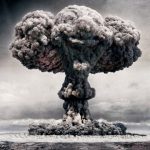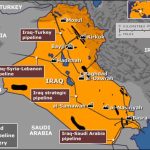Created on Saturday, 08 January 2011 11:08
Part I: The Battle of Ideas
A global economy, energized by technological change and unprecedented flows of people and money, collapses in the wake of a terrorist attack. The year is 1914. Worldwide war results, exhausting the resources of the great powers and convincing many that the economic system itself is to blame.
From the ashes of the catastrophe, an intellectual and political struggle ignites between the powers of government and the forces of the marketplace, each determined to reinvent the world’s economic order.
Part II: The Agony Of Reform
As the 1980s begin and the Cold War grinds on, the existing world order appears firmly in place. Yet beneath the surface powerful currents are carving away at the economic foundations. Western democracies still struggle with deficits and inflation, while communism hides the failure of its command economy behind a facade of military might.
In Latin America populist dictators strive to thwart foreign economic exploitation, piling up debt and igniting hyperinflation in the process.
Part III: The New Rules Of The Game
With communism discredited, more and more nations harness their fortunes to the global free-market. China, Southeast Asia, India, Eastern Europe, and Latin America all compete to attract the developed world’s investment capital and tariff barriers fall.
In the United States, Republican and Democratic administrations both embrace unfettered globalization over the objections of organized labor.
Other Articles On Be Brilliant The Nazis: A Warning From History – Part 3 of 6 – The Wrong War The Fog Of War – Eleven Lessons From The Life Of Robert McNamara Evidence of Revision Part 1 of 6: The Assassinations of Kennedy and Oswald Evidence of Revision Part 2 of 6: The “Why” of it all referenced to Vietnam and LBJ Evidence of Revision Part 3 of 6: LBJ, Hoover and others; What so few know even today Evidence of Revision Part 4 of 6: The RFK assassination as never seen before The Only Thing New In The World Is The History You Don’t Know The Wisdom of Beethoven We Are The Champions and Born To Be Alive David Icke Live at Wembley Arena (2014) – Awaken How Europe Created Adolf Hitler Stewart Swerdlow – The History Of Mind Control THRIVE I: What On Earth Will It Take The President And The Press – President Kennedy’s Warning About The New World Order Dead In The Water – The Sinking of the USS Liberty The Nazis: A Warning From History The Secret Government Bill Hicks on the JFK Assassination The Men Who Killed Kennedy Intro To The Men Who Killed Kennedy Whistle-Blowers: A Conversation with Ellsberg and Dean Watergate And The Reputation Of Richard Nixon ‘The Most Dangerous Man in America’: Daniel Ellsberg And The Pentagon Papers Beating The Bomb The Atomic Café The Manhattan Project How To Start A Revolution Meltdown – The Global Financial Crisis of 2008 Counter-Intelligence Project Camelot: Ole Dammegård – Assassinations And False Flags Normalcy Bias a.k.a Analysis Paralysis Alex Collier – Private Interview (1994) The Fabulous Life Of Billion Dollar Wall Street Ballers Theft By Deception – Deciphering The Federal Income Tax Of The US The Human Body Energy Centers Part 3 of 3 London Real with Dr. Judy Mikovits PhD: Plague Of Corruption, Is COVID-19 a ‘Plandemic’? Occupation 101 Every Thought Has A Frequency Brian Weiss – Many Lives, Many Masters The Rise Of Isis Is Part Of The West’s Pipeline Geopolitics V for Vendetta The US Government Shutdown vs The US Breaching The Debt Ceiling Dr. Len Horowitz: The True Origin of Aids, Ebola And Other Viruses Forecasting Space Weather The Best Flash Mob Ever Riddles in Stone – The Secret Architecture of Washington DC Crude Impact Comedy Roadshow: Steve Hughes Symbols Of An Alien Sky How You Can Be The Ultimate Rebel With A Cause The Crash of 1929 New Earth Project Online Seminar – The Line In The Sand (Streamed Live on October 2nd, 2020) Order-Followers and The Corona Virus Cult Genocide, Worse Than War The Great Depression Part 4 of 7 – We Have a Plan Pandemics Are Over When the Public Decides They’re Over A Message To Humanity Sonic Geometry Arithmetic, Population and Energy Hollywoodism How Did Ordinary Citizens Become Murderers? Bird & Fortune – Subprime Crisis Sketch Breaking The Bank A Beginner’s Guide to Constructing the Universe: Mathematical Archetypes Of Nature, Art, and Science The Giza Power Plant Max Igan & Ken O’Keefe – False Flags And The American Interest George Carlin on Saving The Planet If Cats and Dogs Can Do It, Humanity Can Do It The Hubble Ultra Deep Field in 3D Global Warming or Global Governance? Illuminati Symbolism In Movies Dr. Robert Fisk – Ask All You Like about 9/11, But Just Don’t Ask Why? Michael Tellinger – Ancient Civilizations, Free Energy And The Ubuntu Movement Michael Tsarion On Astro-Theology and The Subversive Use Of Symbolism in Media & Advertising Black Holes: The Other Side Of Infinity Arthur D. Horn – Humanity’s Extraterrestrial Origins Bible Myths And Their Paralells In Other Religions Norman Finkelstein On Gaza, Hamas Goals and the Iron Dome Myth Fed Copies Weimar Hyperinflation Foundational Falsehoods of Creationism Mark Passio: The Unholy Feminine – Neo-Feminism & The Satanic Epi-Eugenics Agenda PLANDEMIC II | Indoctornation REALITY CHECK: Why Face Masks Don’t Work, According To Science Are You Addicted To Your Devices? The Party’s Over: How The West Went Bust The Mandela Effect DIY Research: The Science of Spirituality and The Body’s Amazing Ability to Heal Itself What It Means To Be Human Alex Jones’ Police State 4: The Rise of FEMA Justice for 9/11 (or 9/11 for Dummies) The Malaysian Airliner Isn’t Missing – It Is Exactly Where Somebody Has Designed It To Be The Empire of The City (Ring of Power) Bill Hicks – Revelations (1993 – Uncut) The Great Depression Part 3 of 7 – New Deal-New York Turn Off Your TVs!! Kahlil Gibran – The Prophet Bruce Lipton PhD: The Power Of Consciousness and the Biology of Belief Lecture: War And Globalization – The Truth Behind September 11th, 2001 The Great Depression Part 7 of 7 – Arsenal of Democracy Who Is Peter Joseph?






































































No Comments